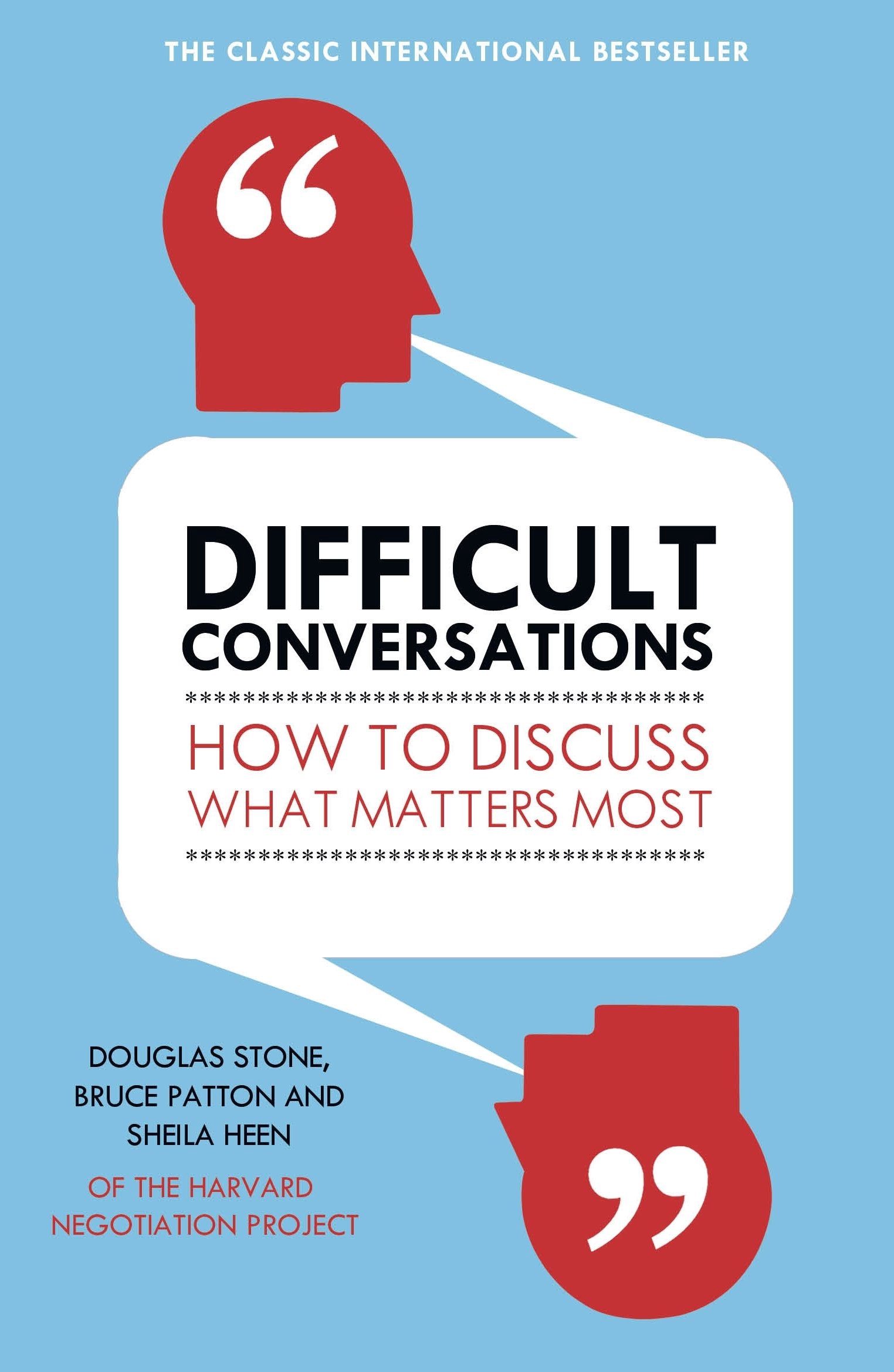
“The conversation, like a dance, requires participants to join in and take turns.” One person may lead, she says, but never forces, while the other follows but is never pressured. Rather than bullet points, a conversation should be more like a dance, Mannix explains – an analogy she returns to many times during the course of the book. While these rules may provide the foundation for a tender conversation, they allow neither for the nuances of the situation nor the needs of either the giver or the receiver, and sticking to them could have dramatic consequences, as we discover at the very beginning of this book in a story that starts with a punch in the face. Breaking bad news becomes a series of bullet points: set the scene, check how much the patient knows, fire a warning shot (“I’m sorry, Mrs Jones, but I have some bad news”). Negotiating a tender conversation, however, is usually taught less thoroughly, she goes on to tell the reader.
#Difficult conversations book how to
As medical students, we are taught repeatedly how to palpate a tender abdomen, gently and with great care, always watching the patient’s expression as our cue to continue.

Tender is a much better adjective, she explains, because it describes a situation where distress may be nearby, but where we do our utmost to minimise the risk of experiencing pain.

#Difficult conversations book professional
Mannix uses real scenarios, from her personal and professional life, to illustrate her theory, and as a result, wisdom, grace and humility shine from every page.Īvoiding the words “difficult” and “challenging”, Mannix prefers to describe the conversations we may try to avoid as “tender”. While the author’s background means that the end of life features strongly in this book, it is by no means exclusively about palliative medicine, and it takes the reader through a broad range of situations from adoption to sexuality, from the death of a child in early pregnancy to growing old. Using her wide experience as a consultant specialising in palliative care, an area where good communication is paramount, Mannix examines why we may shy away from broaching certain topics with our loved ones, what tools we can use to make those conversations easier to have, and the stumbling blocks we all may encounter along the way. “This book is an invitation to notice and expand the skills we all possess.” “We all have moments when words fail us,” she explains. “R ight now, there is quite likely to be a conversation you are trying to avoid,” writes Kathryn Mannix in her new book Listen: How to Find the Words for Tender Conversations, a follow-up to With the End in Mind, her moving and bestselling exploration of how to die well.


 0 kommentar(er)
0 kommentar(er)
